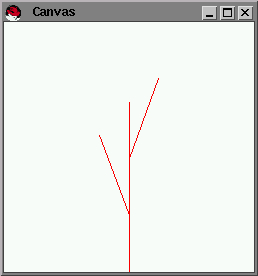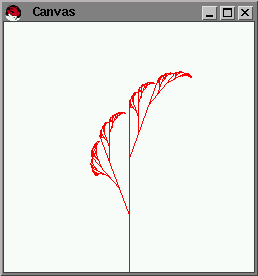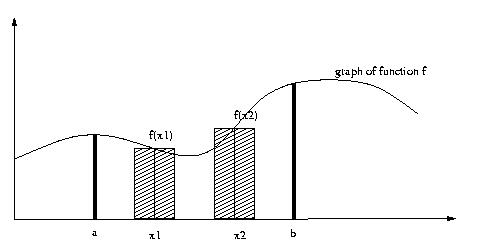- The first one, make-singles, constructs a list of
one-item lists from the given list of numbers. For example,
(make-singles (list 2 5 9 3)) = (list (list 2) (list 5) (list 9) (list 3))
- The second merge-all-neighbors merges pairs of neighboring
lists. More specifically, it consumes a list of lists (of numbers) and
merges neighbors. For example,
(merge-all-neighbors (list (list 2) (list 5) (list 9) (list 3))) = (list (list 2 5) (list 3 9))
In general, this function yields a list that is approximately half as long as the input. Why is the output not always half as long as the input?
 |
 |

Here the area of interest is that enclosed by the bold vertical lines at a and b, the x-axis, and the graph of the function.
In section 26, we learned to approximate the area by computing and adding up the area of rectangles like the two above.
Based on our use of divide and conquer (bi-section in math-speak), it is easy to design an algorithm (i.e., a program based on generative recursion) that computes the area. Roughly speaking, we split the interval into two pieces, compute the area of each piece, and add the two areas together.
Step 1: Develop the algorithm integrate-dc, which integrates a function f between the boundaries left and right via the divide-and-conquer strategy employed in find-root. Use rectangle approximations when an interval has become small enough.
Although the area of a rectangle is easy to compute, a rectangle is often a bad approximation of the area under a function graph. A better geometric shape is the trapezoid limited by a, (f a), b, and (f b). Its area is:
f(right) - f(left)
(right - left) * ------------------
2
Step 2: Modify integrate-dc so that it uses trapezoids instead of rectangles.
The plain divide-and-conquer approach is wasteful. Consider a function graph is level in one part and rapidly changes in another. For the level part it is pointless to keep splitting th interval. We could just compute the trapezoid over a and b instead of the two halves.
To discover when f is level, we can change the algorithm as follows. Instead of just testing how large the interval is, the new algorithm computes the area of three trapezoids: the given one, and the two halves. Suppose the difference between the two is less than
TOLERANCE * (right - left)This area represents a small rectangle, of height TOLERANCE, and represents the error margin of our computation. In other words, the algorithm determines whether f changes enough to affect the error margin, and if not, it stops. Otherwise, it continues with the divide-and-conquer approach.
Step 3: Develop integrate-adaptive, which integrates a function f between left and right according to the suggested method. Do not discuss the termination of integrate-adaptive.
Note: The algorithm is called ``adaptive integration'' because it automatically adapts its strategy. For those parts of f that are level, it performs just a few calculations; for the other parts, it decreases the interval a lot so that the error margin is also decreased accordingly